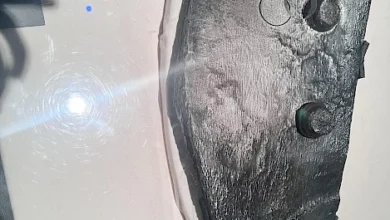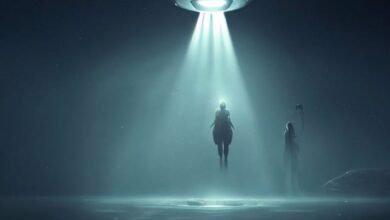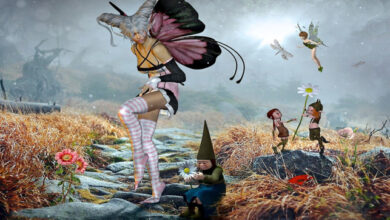Mice are Growing Antlers in China
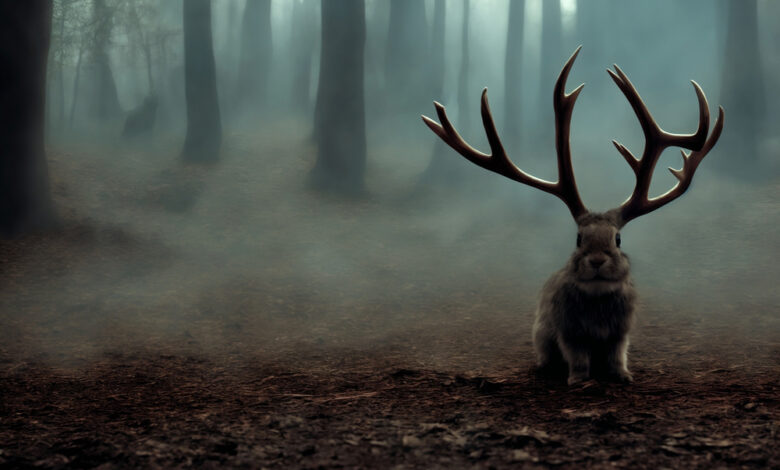
There was a time before selfies, texting, email and instant messaging when travelers informed their families and friends of their location by mailing them a postcard. These tiny cards had a space for a written message on one side and a high-quality photograph from the vacation location on the other. Travelers to the western United States, especially Wyoming, often sent their friends postcards showing a creature described as a “jackalope” and the legend of a jackrabbit with the antlers of an antelope was spread around the globe. While many swore the horned hares were real, definitive proof outside of postcards and taxidermy shops with winking owners was tough to find. Today, a real-life relative of the jackalope has made its debut in China, where scientists have created a mouse with the antlers of a deer that grow, fall off, and grow again just like they are supposed to. Is this a mouse-alope? A rodeer? Should Disney start developing a new combination of Mickey and Bambi? Let’s find out more about what this creature is and why it is important for humans. We’ll throw in a little jackalope lore too.
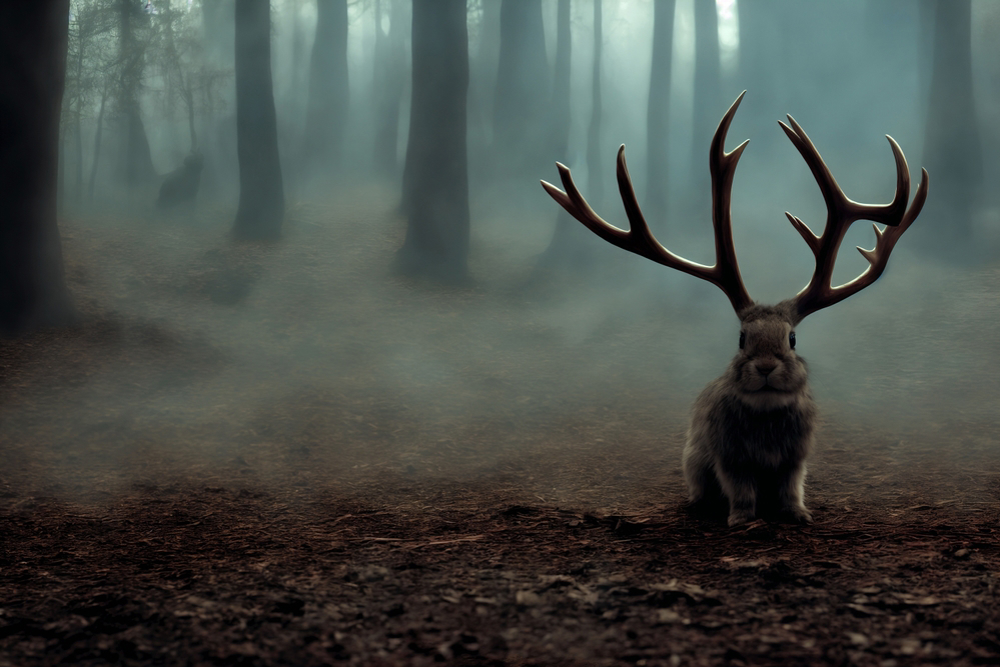
“Mammals have largely lost the capacity to regenerate appendages or organs. One exception is the annual regeneration of antlers in deer, which provides a valuable model for studying organ regeneration in mammals.”
In the abstract to “A population of stem cells with strong regenerative potential discovered in deer antlers,” published in the journal Science, Tao Qin, the lead author and researcher at the School of Ecology and Environment at Northwestern Polytechnical University in China, describes the staple of science fiction which is a trait of many reptiles but has eluded all attempts to duplicate it by humans – limb and organ regeneration. Whether spontaneous or gradual, natural or induced, limb regeneration would solve many human medical conditions and perhaps even be a stepping stone to anti-aging and immortality. While stem cells – the cells from which all other cells grow – have long been seen as the potential key to regeneration, they have not yet reached that goal. Tao Qin and his team decided to study the one mammalian regeneration that already works and see if it could be duplicated in another species.
“Antler regeneration involves a stem cell–based regenerative process. A key population of antler blastema progenitor cells (ABPCs) displays self-renewal, osteogenic-chondrogenic differentiation, and bone tissue repair potential.”
Unlike horns, antlers are extensions of an animal’s skull and composed of bone, cartilage, fibrous tissue, skin, nerves, and blood vessels. They are found only on males (except for caribou) and are shed and regrown annually. The ‘stem cell’ that is the key to this process is a mass of cells called the ‘blastema’ which grow into antlers faster than almost nay living tissue found in nature – white-tailed deer antlers can grow as much as a quarter-inch per day, elk antlers can grow as much as 1 inch a day, and a moose can grow a pound of new antler growth every day. While scientists have known about blastema blobs, Qin wanted to isolate the individual cells that were responsible for regeneration. The team obtained 75,000 antler tissue cells from sika deer (Cervus nippon) at different times in the antler growth period, including after shedding. As described in The Daily Mail, the researchers found stem cells in the antler pedicle or stump that is left behind when an antler is shed. Just five days after shedding, those cells had generated what was identified as the missing link – a subtype of stem cell which the team dubbed ‘antler blastema progenitor cells’ (ABPCs). Five days later, the ABPCs were regenerating cartilage and bone.
“Cross-species comparison revealed that the mouse has a similar type of ABPC (in the regenerative digit tip), but nonmammalian species do not, suggesting that mammals may have a distinctive regeneration mechanism.”
Qin’s team knew that previous researcher had grown antler stumps in mice by implanting antler tissue on their skulls, but they wanted to recreate the complete regenerative process from a single cell. They isolated single antler blastema progenitor cells, nurtured them in a petri dish, then transplanted the cells onto the skulls of mice where they grew into ‘antler-like structure[s]’ containing living cartilage and bone in 45 days. (Photos of the stages of growth can be seen here.)
What does this mean for humans? Qin has the answer:
“Our results suggest that deer have an application in clinical bone repair. Beyond that, the induction of human cells into ABPC-like cells could be used in regenerative medicine for skeletal injuries or limb regeneration.”
Now that they have isolated antler blastema progenitor cells and seen how they work, researchers must next genetically edit human cells into a form of ABPC cells which can then generate or regenerate tissue, organs and limbs. It would seem that the best place to start would be with bones, the tissues closest to antlers, and develop ways to repair bones and cartilage, with the goal being to use that knowledge to regenerate lost limbs in humans.
With the creation of the mouse with antlers, could a real jackalope be part of the experimentation process towards regenerating human limbs? You may ask … why would we need to do that if jackalopes already exist? Good question! Stories of animal hybrids have been around for thousands of years. In particular, a 13th-century Persian painting shows a rabbit with a single horn, and the ‘wolpertinger’ is a horned rabbit in medieval Bavarian folklore. A scientific explanation for rabbits and hares which look like they have horns is the Shope papilloma virus, which causes horn-like protuberances on the skin all over a rabbit’s body. However, the ‘jackalope’ is generally traced to Douglas Herrick, a hunter and taxidermist in Douglas, Wyoming, in 1939, who allegedly tossed a dead rabbit on the floor where it slid next to some deer antlers – causing his brother Ralph to comment that “it looked like a rabbit with horns on it.” Douglas used his taxidermy skills to create it and the jackalope became a popular item in his shop – being taken home by visitors and popularized on postcards. Douglas, Wyoming, declared itself the “Jackalope Capital of the World,” erected an eight-foot concrete jackalope statue downtown, posts “vicious jackalope” warnings holds an annual Jackalope Day and festival. In the spirit of “if you build it, it will come,” Douglas may have generated horns on a hare and created the ‘real’ jackalope.
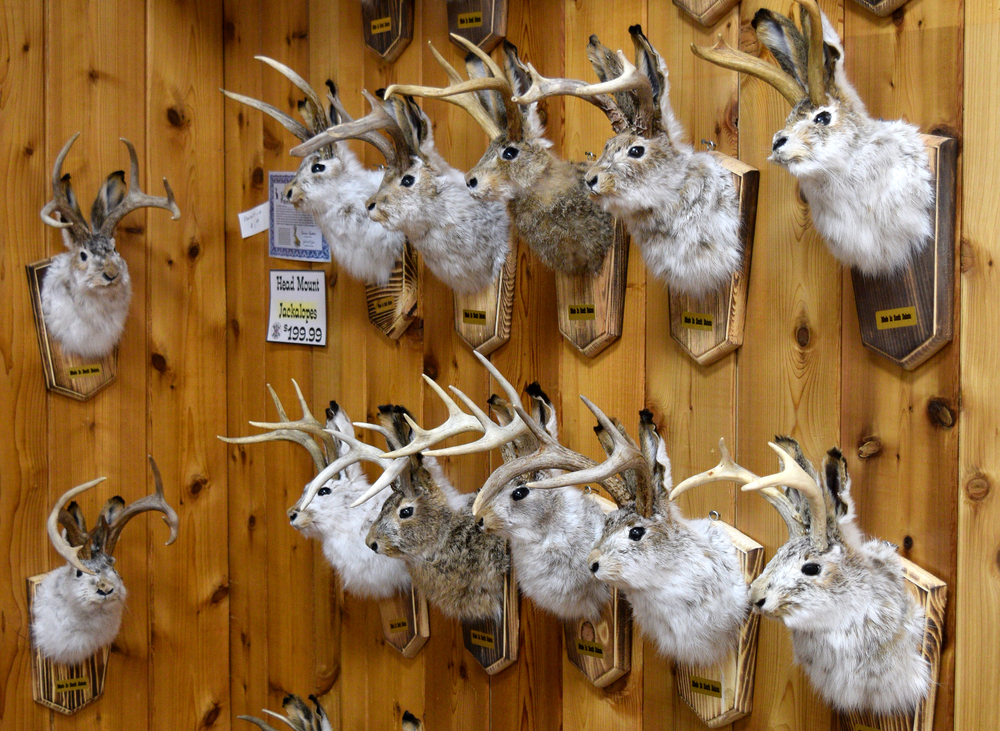
Will we see humans regenerating limbs like deer regenerate antlers any time soon? That depends on some creative gene editing – a skill in which Chinese scientists appear to be leading the world. If achieved, will limb regeneration be used for the good of medicine and humanity … or will it be used for the military and potentially for creating superhumans or super-animals? That remains to be seen.

